In fact, Springfield believes the 911 is the perfect pistol for everyday carry.
Those are some big words for such a small gun.
Lets look at the 911 and see if it measures up.
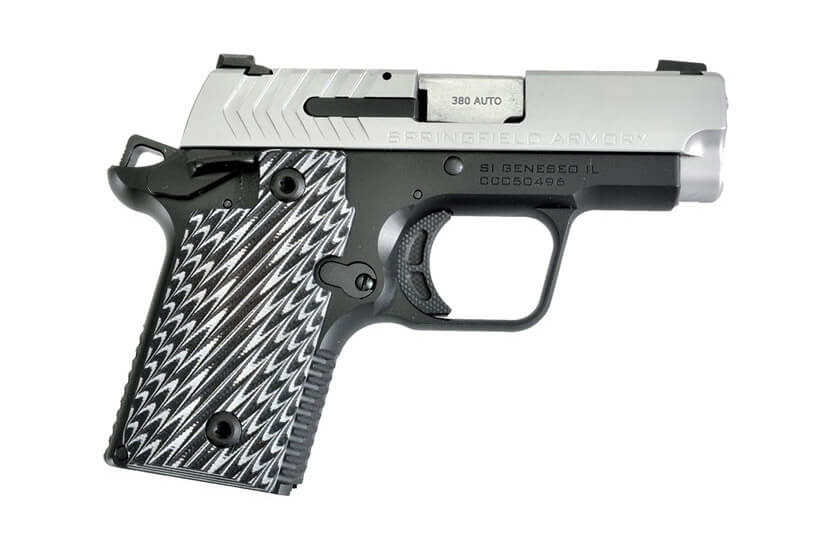
First, this is a small gun.
It has been shrunk in every way to fit the .380 ACP cartridge.
It sports a 2.7-inch barrel, and overall its 5.5 inches long by 3.9 inches tall.
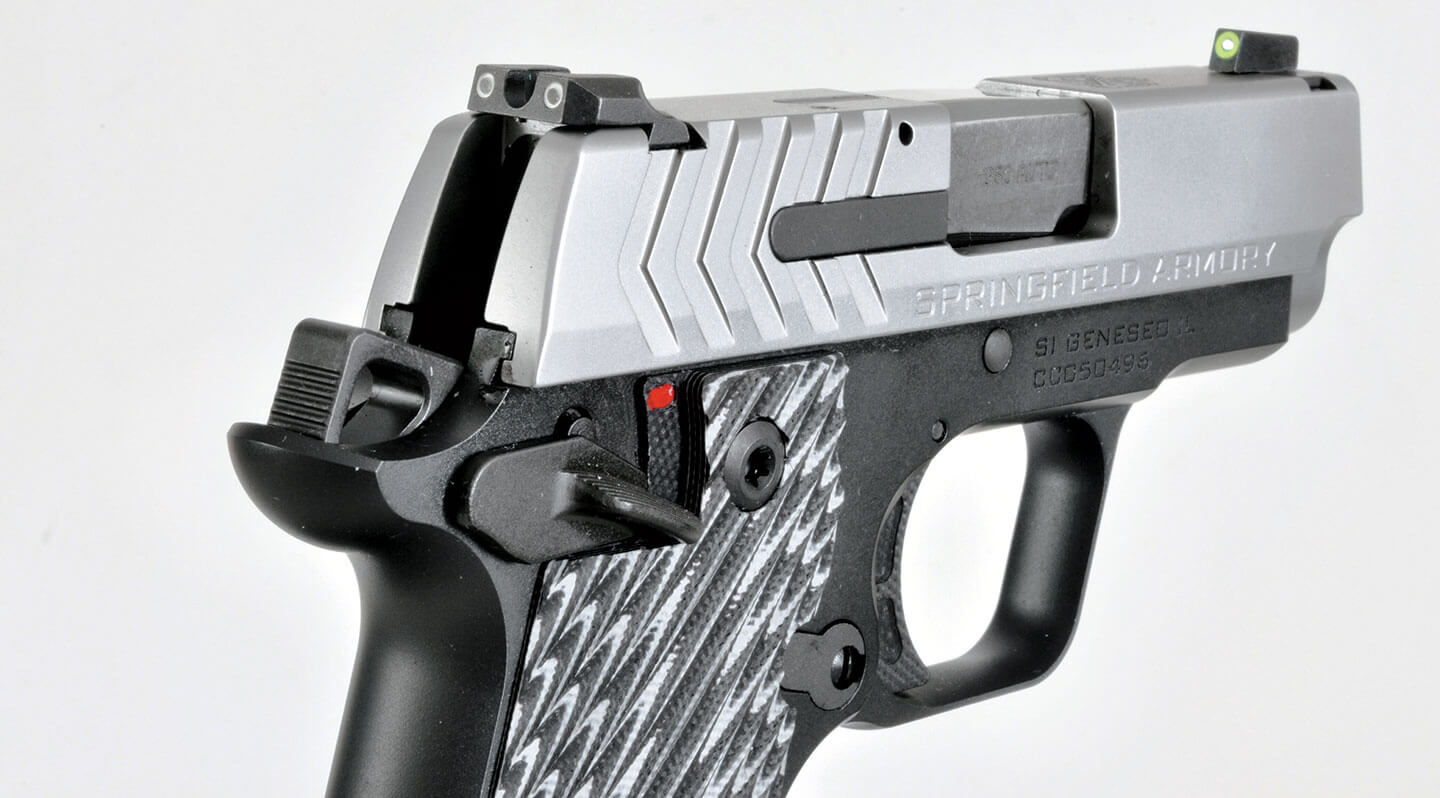
It is also flat, less than an inch thick at the grips.
Springfields specs have the guns weight as 12.6 ounces with an unloaded magazine in place.
So its both small and light enough to conceal in a pocket.
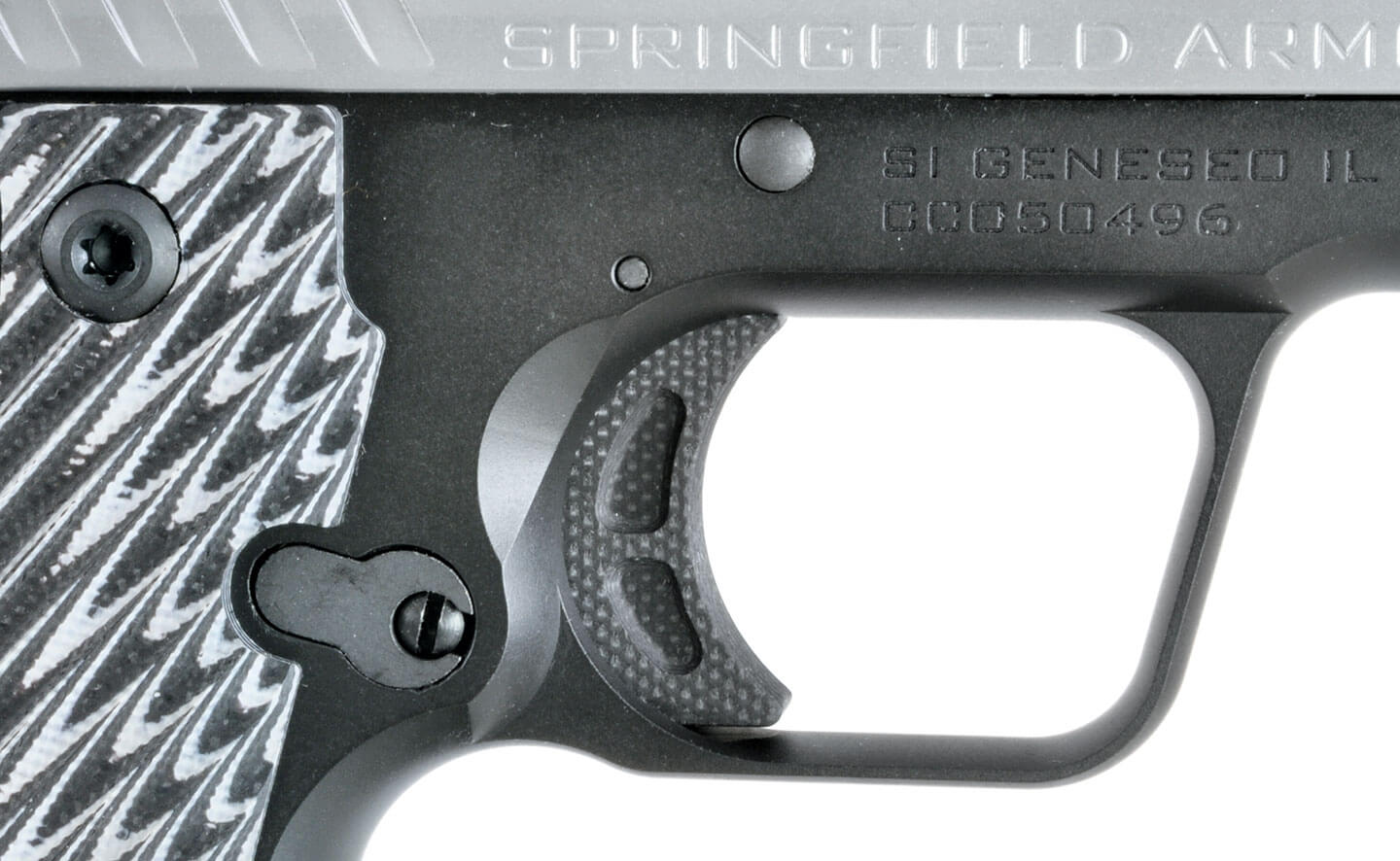
There are two versions of this pistol, the only difference being the finish on the slide/barrel.
For testing, Springfield Armory shipped me a two-tone sample.
First, both the slide and barrel are stainless steel.
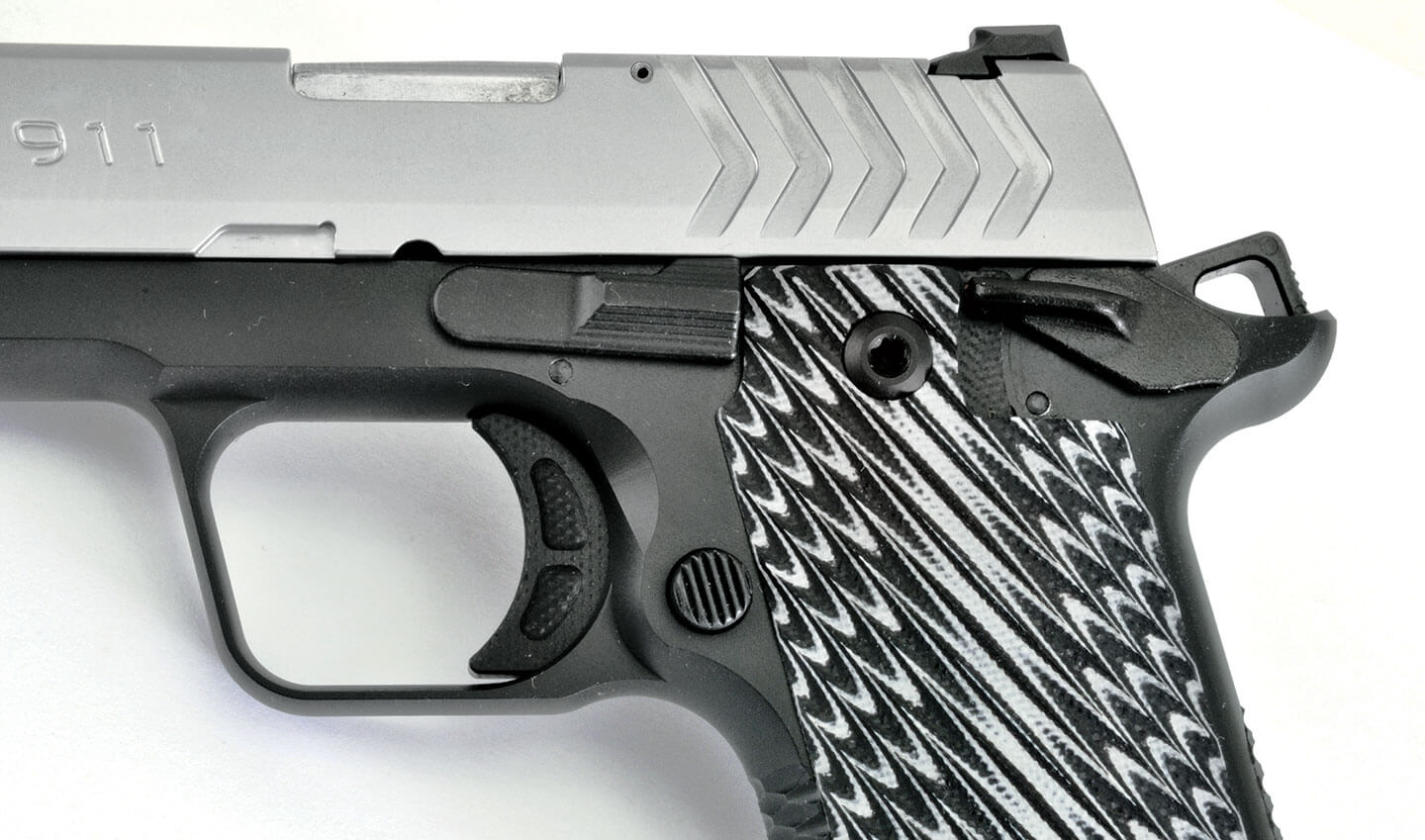
On the all-black pistol, the stainless-steel slide and barrel are coated with black nitride.
The frame is 7075 aluminum for both weight savings and imperviousness to rust.
Interestingly, the trigger is made of G10 the same composite laminate material as the grips.

All the G10 parts trigger, mainspring housing and grips are made by Hogue.
For starters, the sights are top-of-the-line AmeriGlo Pro-Glo night sights.
The big front sight has a tritium insert with a fluorescent yellow/green ring around it.
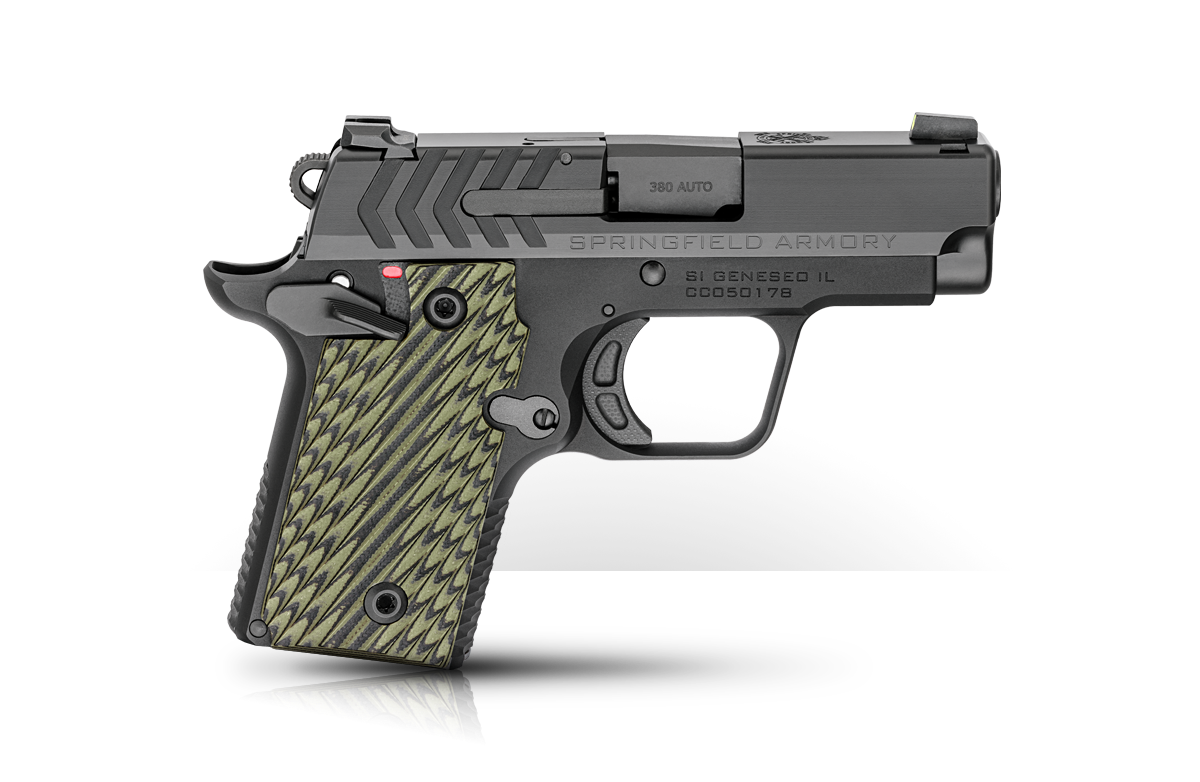
At the top of the slide is a loaded-chamber indicator in the form of a pivoting lever.
The pistol sports a full-length recoil spring guide rod with a flat-wire recoil spring.
Unlike a full-size 1911, this pistol does not have a grip safety.
Also helping to keep your hand in place are the aggressively textured and stylish black-and-white grips.
On the all-black 911 the grips are green and black.
The advertised trigger pull on the 911 is five pounds.
The ambidextrous thumb safety lever clicks when moving it in both directions.
Unlike a traditional 1911, you’re free to activate the thumb safety when the hammer is down.
You dont need to, and Im not sure why youd ever want to.
When the hammer is down on a single-action-only pistol, pulling the trigger gets you nothing.
With the safety engaged you cannot cock the hammer or work the slide.
With the hammer cocked it takes little effort to work the slide on this pistol.
One of the advantages of a .380 ACP over small guns chambered in 9mm is the lighter recoil spring.
Check outDan Abrahams 911 reviewfor more information.
Each of us was given a pistol and a bucket of ammo.
Seriously, an actual bucket.
Multiply that by 12 or so fellow shooters and youre talking a lot of ammo.
I dont remember experiencing a malfunction or seeing anyone else have one.
Most subcompact pistols are bought to carry, not to shoot.
Because its comfortable and we all liked it.
This is rare for a subcompact pistol.
Springfield invited Action Target to the event, and we shot some of the companys new reactive paper targets.
It was neat watching paper targets drop like steel plates and then reset.
This is a fun pistol to shoot.
I have only one real complaint about the 911, and that is with the thumb safety.
To disengage it you have to push it down even farther.
This happened to me several times.
I dont know any other nicer word for it.
In effect, it is no different than carrying a pistol without a loaded magazine inserted.
If youre going to carry the 911, carry it cocked-and-locked or carry something else.
The 911 is sold with a little nylon carrying case with an internal rubberized holster.
The holster is mounted on a Velcro strip, so its position is adjustable.
Opposite the holster on the inside is a windowed slot, presumably to house your CCW card.
The guns are similar in appearance, function and size.
Some people feel the .380 is too weak to be suitable for self-defense, but this is not 1985.
I consider being able to hit the target fast and repeatedly more important than caliber.
Shot placement is far more important than caliber.
The original article can be viewedhere.
smack the Go To Forum Thread link below to jump in!
Go to forum thread




